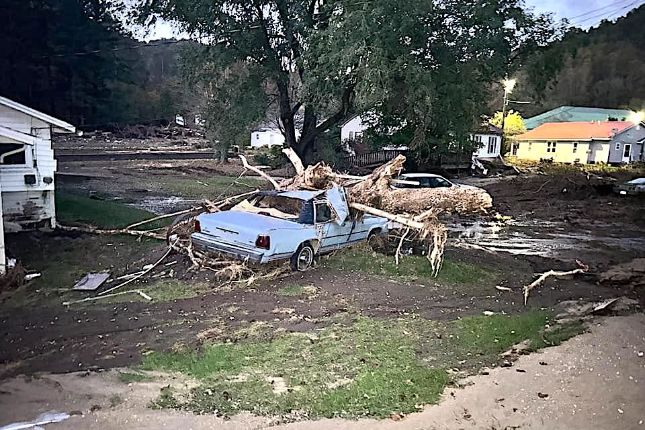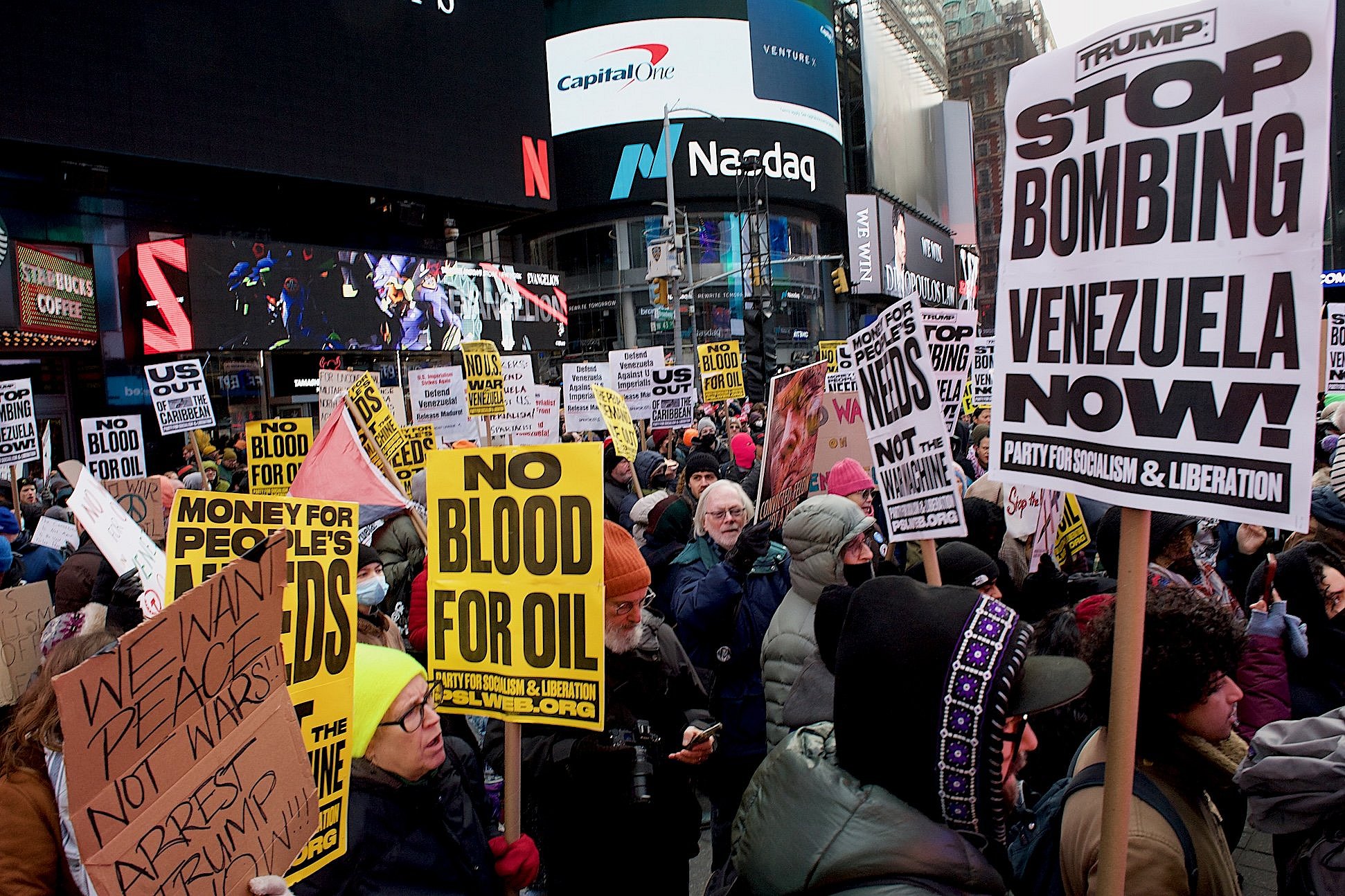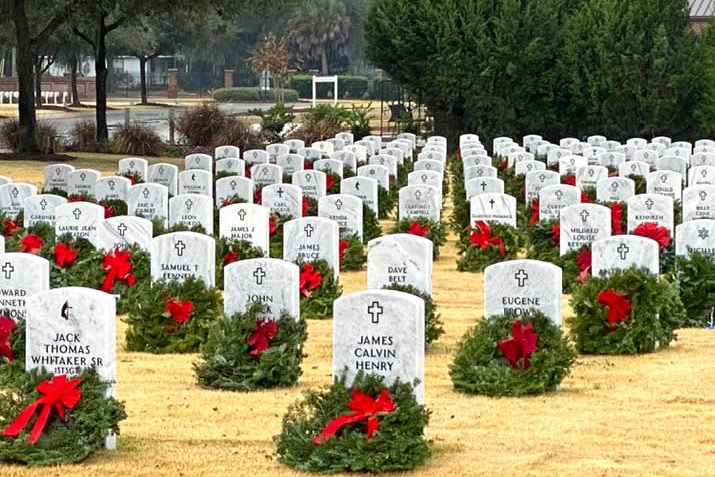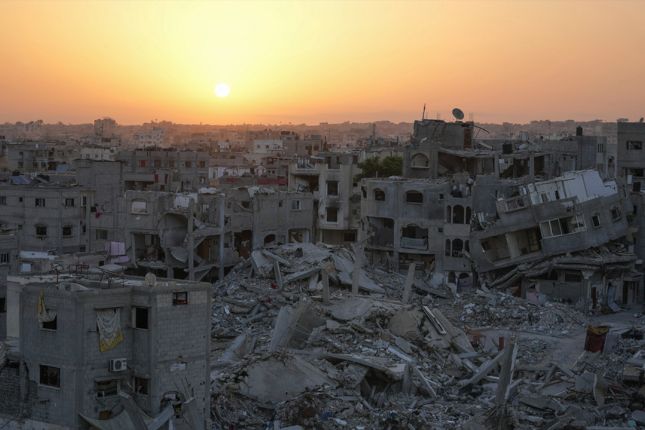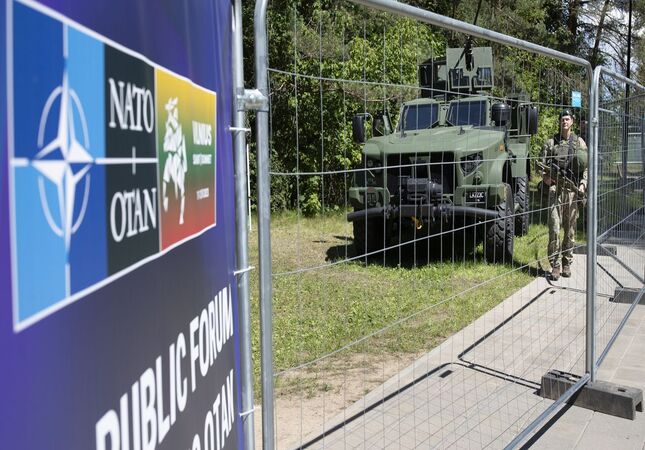Over a week since Hurricane Helene caused widespread devastation in multiple southeastern states of the U.S., Jean Taylor-Todd, a resident of rural Newland, North Carolina, in Avery County, says her town is still waiting for government help.
“Our county was hit hard by this storm,” she told Consortium News this week via email. “Roads crumbled, bridges collapsed, road shoulders washed, businesses flooded, trees fell across roads, on power lines, and on buildings and in yards… Not far from me, houses flooded off their foundations and washed multiple outbuildings away. I know of four deaths of people not far from me and of two horses swept away that drowned. Some folks were heavily flooded inside their homes, and at this writing on October 7, are still without power… Some of the flooding… created sinkholes in which traveling cars were swallowed, but occupants [were] saved. I witnessed two cars submerged in sinkholes just minutes from my house.”
Helene made landfall in Florida on the night of Sept. 26. Since then, the storm’s official death toll across six states has risen to 232 with that number anticipated to keep climbing for some time, as many are still missing.
Now with another major storm heading for Florida on Wednesday, Homeland Security Secretary Alejandro Mayorkas is promising to respond to the new threat from Hurricane Milton without disrupting the agency’s response to Helene.
But with a U.S. presidential election looming in November, the administration’s response to the Helene disaster has stirred criticism from supporters of former President Donald Trump, now the Republican presidential candidate.
“My office has been in contact with whistleblowers in numerous emergency-management functions at the federal, state, and local levels, and they all point to the same critical mismanagement issues,” U.S. Rep. Matt Gaetz (R-FL), wrote in a letter to Secretary Mayorkas on Friday.
Gaetz continued: “FEMA has wasted taxpayer funds, misappropriated funds, and left other federal, state, and local responders without deployment orders on the ground. As reported and further confirmed by my office, hundreds, if not thousands of service members were deployed by the Department of Defense to North Carolina and have sat idle, waiting for FEMA. We have confirmed FEMA employees deployed, on the clock, awaiting orders in hotels. FEMA pre-disaster aid was withheld, exacerbating the emergency.”
Other Trump loyalists have criticized both the money allocated by the White House to the U.S. proxy war in Ukraine and to services for undocumented immigrants.
“Billions for Ukraine,” the X, formerly Twitter, account of America First Legal, founded by longtime Trump adviser Stephen Miller, posted on Sept. 29. “Billions for illegal aliens. And what for the Americans? Reprogram every single dollar that FEMA has dedicated to support illegal aliens to go towards Americans who are facing unprecedented devastation!”
Accusations of the White House taking money from FEMA to pay for immigrant services have been refuted.
FEMA has also published a web page to counter “misinformation” in response to the rising public criticism.
FEMA, for instance, has denied allegations that it has confiscated supplies, as has the Red Cross, with the latter clarifying that they do not accept physical donations but coordinate with other groups that do.
Rumors & Confusion
Some of the rumors surrounding the governmental response to Helene have either proven to be baseless or blown cartoonishly out of proportion due to the chaos and ongoing lack of communication in remote areas.
For example, there were concerns initially that $750 would be the maximum amount of financial support individuals could hope to receive from FEMA after Vice President Kamala Harris made public statements about FEMA providing that amount in immediate cash disbursements, which were mischaracterized as the only benefits available to survivors.
While it’s true that multiple forms of FEMA aid are supposed to be available, some Helene survivors claim that their attempts to apply for these $750 cash disbursements were immediately denied.
Even when able to access the cash payments, it may not be nearly enough to restore survivors to their former way of life. If you’ve lost your home and are uninsured, the average payment is just $5,000.
In the flood-devastated areas affected by Helene, less than 2 percent of homeowners have flood insurance, a statistic that may mean many low-income homeowners will be forced to abandon their homes.
War Spending
Meanwhile, Stephen Miller’s big-picture criticism of government spending on foreign wars — including an Israeli genocide on Palestinians that he failed to mention — is harder to downplay as Helene exposes FEMA’s inadequate financing.
FEMA says it can weather Helene, but not much more.
Mayorkas told reporters that although FEMA is able to meet the immediate needs of Helene survivors, “We are expecting another hurricane hitting — we do not have the funds, FEMA does not have the funds, to make it through the season.”
FEMA’s overall budget for fiscal year 2024 was over $30 billion, with about $20 billion allocated for base and major disaster relief. (The budget included a “$4.7 billion Southwest Border Contingency Fund (SWBCF) for the Department to respond to migration surges along the Southwest Border.”)
For the new financial year which began Oct. 1, Newsweek reported that the agency said it would need $33.1 billion.
This number pales in comparison with overall war spending.
Since the war in Ukraine began, a Republican-led Congress has approved at least $175 billion in aid for Ukraine across multiple aid package bills.
Meanwhile, the U.S. State Department under President Joe Biden has approved more than $20 billion in arms deals for Israel to be fulfilled in the coming years.
Separate from these transfers, the U.S. has spent a total of $17.9 billion on military aid to Israel since Oct, 7, 2023, finds a new report by Brown University’s Cost of War project.
U.S. Aid for International Development (USAID), an independent agency of the federal government, reported this year that over the course of the war in Ukraine, it had sent over 1,000 generators, and 495 industrial transformers to Ukraine.
FEMA has so far provided far fewer generators — 157 — for Hurricane Helene relief efforts.
On Sept. 28, two days after Helene made landfall, Tennessee’s National Guard deployed more than 700 service members to Kuwait.
In the wake of Helene, the Tennessee National Guard deployed fewer — 401 soldiers — for disaster relief, according to Rep. Tim Burchett (R-TN) in a statement intended to debunk what he called “misinformation” about TEMA, the Tennessee Emergency Management Agency.
Observers on social media have flagged the way South Carolina Republican Sen. Lindsay Graham used an appearance on Fox News to switch the subject away from hurricane damage in his own region of the country to the needs of Israel’s genocidal military campaign.
“I’ve been going all over South Carolina like most people, I haven’t slept much,” Graham told Fox News, “But look what’s going on in Israel. Our friends in Israel are surrounded by people that want to kill them, destroy them, a second holocaust in the making, and Biden says ‘be proportional.’ What is the proportional response to people who want to kill you and your family? They’re running out of ammunition in Israel. We have to help our friends to keep the war over there from coming here.”
The full extent of the damage caused by the hurricane remains obscured by an ongoing lack of power, destroyed roads, and spotty communications in the mountainous geography of the worst-affected areas.
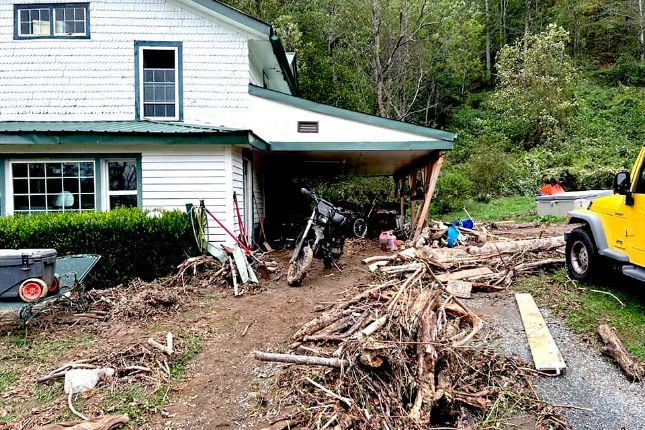
Hurricane Helene damage to Janice Trent’s house in Minneapolis, North Carolina. Photo: Courtesy Janice Trent.
FEMA says that its efforts to aid Helene survivors had cost, as of Oct. 6, $137 million for shipments of “14.9 million meals, more than 13.9 million liters of water, 157 generators, and more than 505,000 tarps to the region.” The agency says it has transferred $45 million directly to Helene survivors in upfront funding.
FEMA having “shipped” these supplies, however, does not necessarily mean that all of the resources have reached the areas that need them most, or that they have all been distributed.
In Newland, North Carolina, Jean Taylor-Todd, said that in the absence of official services, the community is surviving on mutual aid.
“I haven’t seen any official services yet,” Taylor-Todd told Consortium News. ”Local people have organized relief at churches and one small business I know of, where food, water, toiletries, pet food, tarps, flashlights, and other supplies are being given to whoever wants them. I did see a Chinook flying overhead Saturday, the 28th. [I am] unaware of any FEMA, Red Cross, or military presence. I was in Newland today and witnessed a convoy on the road that looked like [the] National Guard. “
Taylor-Todd, who lives approximately six miles outside Newland, said she had been to town several times since the storm. As of Monday: “No FEMA, Red Cross, or military presence. The convoy of what looked to be the National Guard is the most ‘official’ presence I’ve seen. I don’t feel that the government’s response has been adequate at all, nor do the residents I’ve spoken to. We feel forgotten. Much of the clearing, clean-up, and relief has been provided by local people or other interested individuals from other parts of the state and from outside North Carolina.”
Helene is just the most recent disaster to generate a trail of claims of botched governmental aid. Last year the Lahaina fire devastated parts of Maui in Hawaii, leaving many survivors feeling abandoned by the government. Other disasters included the major train derailment in East Palestine, Ohio, with residents again expressing deep distrust in the government and cleanup efforts. A fire at a chemical plant in Georgia, the third such fire at the same facility in seven years, necessitated the evacuation of thousands.
In the Helene aftermath, ever areas that weren’t flooded are struggling over a week after the hurricane tore through the Southeast.
"It All Looks the Same"
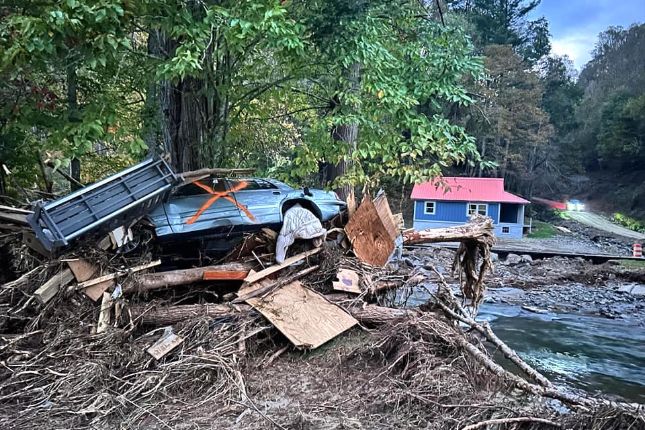
Hurricane Helene damage in Minneapolis, North Carolina. Photo: Courtesy Janice Trent.
Joe Lyn is an artist who lives in a rural area 10 miles outside of Vidalia in Toombs County, Georgia, where Helene’s winds knocked over large numbers of trees and power lines, leaving many without electricity, without water and with some unable to leave their property.
“As bad as my road is,” Lyn said, “if you drive another 15 minutes to the rural area between myself and Baxley, Georgia, for example, it seems to get progressively worse… I’ve been about 15 miles out in the radius from Vidalia in several directions. It all looks the same.”
Lyn told Consortium News that rural land surrounding Vidalia was covered in downed trees and power lines that had not been repaired as of Friday, Oct. 3, and that rural areas were still without power, which meant that most were also without water, as they use electric pumps to access well water.
Lyn said the only disaster response he or his family members had seen amounted to one bulldozer and one police car despite overhanging power lines, destroyed homes, and impassable roads.
He said that while Vidalia itself had been restored to basic functionality, rural areas where people could be trapped on isolated country roads without power or access to water had received virtually no help. One friend had gone six days without water, unable to get out of his property until almost a week after Helene struck.
Lyn said his first concern was that he was not seeing any local police presence, such as the sheriff’s department. “In my area, in the rural area, the dirt roads, there was no one once the road was cleared doing wellness checks, knocking on doors, asking if people are ok. You’re seeing trailers and even nice homes destroyed.”
Lyn’s account adds to many others, some far worse.
Amanda Campbell, of Forest City, N.C., told Jordan Chariton of Status Coup News about the devastation she witnessed in Asheville in the days immediately following Helene.
Campbell described journeying into the city to retrieve stranded family members, and like other reports from eye-witnesses, described a widespread stench of death: “There’s so many dead bodies that you can smell it. The stench is becoming unbearable, like you can smell it that there are that many dead people. It’s bad… I can’t describe to you how bad it is… The people are helping the people… FEMA does not have it under control, we need help.”
As of Tuesday, Oct. 8, local news reports indicated that at least 40 people had died in Asheville.
Campbell describing the experience of family members she’d rescued from Asheville: “They’ve literally watched multiple neighbors die. One was hit by a tree, others were washed away… the house was floating away with people in it. They are in shock, they are traumatized.”
One woman from Swannanoa, NC., told Accuweather’s Bill Wadell: “We lost everything… we got family members floating down the river… FEMA’s here. You know what FEMA just told us? ‘We can’t get you a phone.’ I have no ID, I have no way to pay for food, he has no way to get gas, so we’re stuck. So we have to sleep in a car that’s leaking with the same clothes we’ve had on.”
Main photo: Hurricane Helene damage in Minneapolis, North Carolina, October 2024 © Courtesy Janice Trent.
Source: Consortium News.
